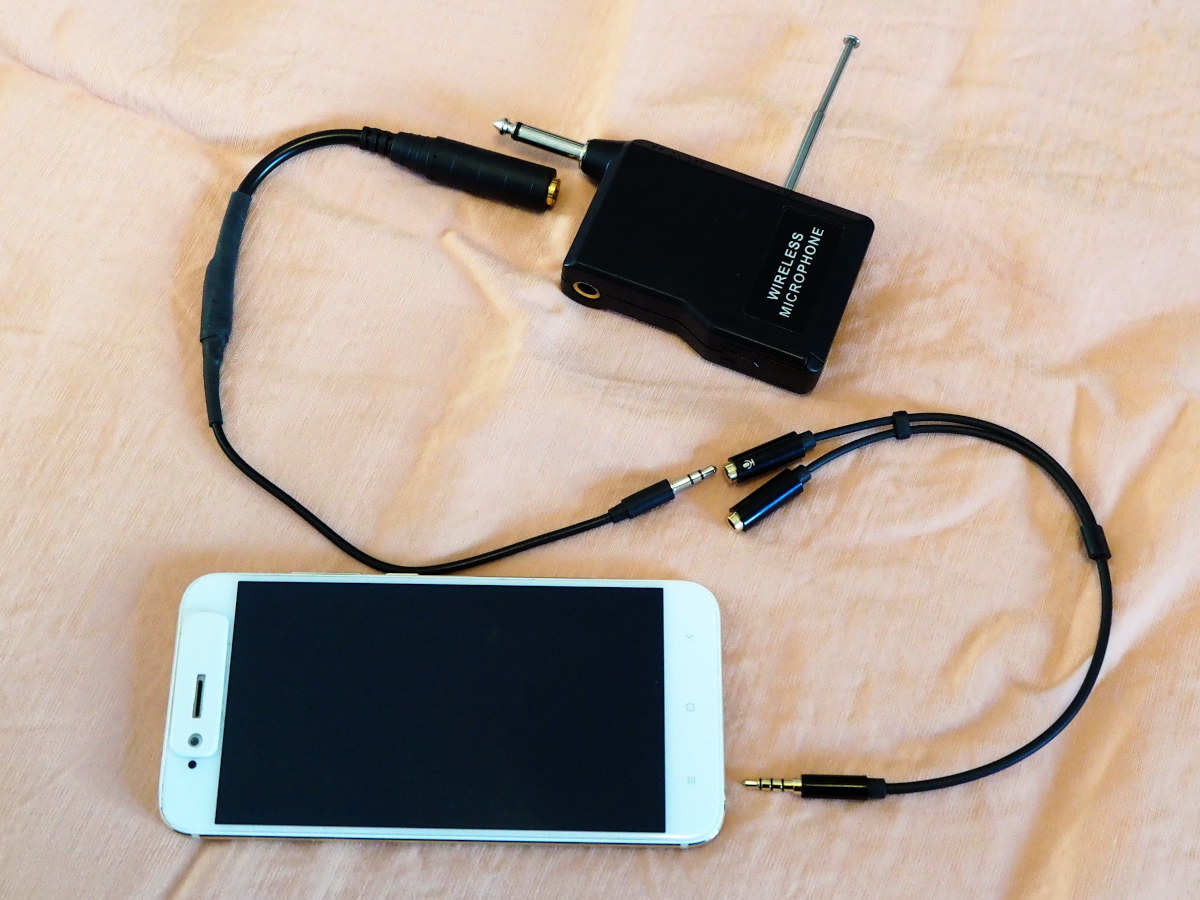Table of Contents
Audio recording with wireless mic on Android
 Recording audio using an external microphone connected to an Android device can be a real nightmare. We tried the hard way using a Chinese, no-brand, wireless UHF microphone!
Recording audio using an external microphone connected to an Android device can be a real nightmare. We tried the hard way using a Chinese, no-brand, wireless UHF microphone!
We can group the problems you can face in three main categories:
- Physical connection
- Electrical compatibility and hardware autodetection
- Software capabilities and settings
Physical connection
Most Android devices have a 3.5 mm jack accepting a TRRS connector in CTIA standard and every brand of mobile phones produces headsets with their own standard. The vast majority of solutions uses electret microphones requiring a bias current, but use some combinations of impedence to detect the insertion of the microphone and to handle the headset button (or buttons).
So, connecting an external microphone, can be as simple as making a cable that connects the ring and the sleve of the CTIA connector to (respectively) the ground and the microphone line of the microphone. The hard part is to guess, or empirically try, if the microphone requires a bias current, if the Android device is provinding such a current and if the microphone produces a sufficient output level (actually a voltage in the order of the millivolts) that can be used by the device.
Electrical compatibility and hardware autodetection
As stated above, the first problem is powering the microphone itself, because generally we will use an electret one. It is a common practice to provide the power on the same line of the microphone signal, so requiring just two wires for both power (from the device to the mic) and for signal (from the mic to the device). The power, also called bias current, is generally in the range of 2.5 to 5.0 volt.
On a Xiaomi Mi A1 smartphone, which has a TRRS 3.5 mm jack, CTIA standard, we measured a bias current of 2.19 volt between the microphone (sleeve) and the ground (ring).
Another parameter which should be considered is the impedence, but unfortunatelly it is generally impossibile to find documentation about what is expected by the smartphone and what is offered by the microphone.
Software capabilities and settings
Wishing to connect the UHF microphone to an Android smartphone, we prepared an adapter cable. From 3.5 mm jack TRRS male to 1/4“ jack TS female, with this pinout:
| 1/4” TS female jack | Signal | 3.5 mm TRRS male jack (CTIA) |
|---|---|---|
| Not connected | Tip | |
| Not connected | Ring | |
| Sleeve | Ground | Ring |
| Tip | Microphone | Sleeve |
The smartphone did not sensed the microphone, there is not much documentation about it, but it seems that the autodetection of the microphone is based upon the impedence of the mic itself, if it is too low, it is not detected.
Once completed the electrical connection and acknowledged that automatic detection of the external microphone does not work, I decided to use the Lesser AudioSwitch app, which allows switching between the internal speaker/microphone and the external headset/mic by a button tap.
To realize the electrical connection explained in the above table, I used a mic/headphone splitter cable: the CTIA 4-poles male jack goes into the smartphone, the headphone female jack is left unconnected, the mic female Jack is connected to a self-made adapter cable featuring a 3.5 mm TRS male jack and a 1/4“ TS female jack. Finally the UHF receiver is connected using the 1/4” jack.
To record audio I used the Audio Recorder v.3.3.11 app from the F-Droid repository (free software, GPLv3 license). Into the Settings menu I choosed the Unprocessed recording source instead of mic, this gives raw audio data, without automatic gain applied etc. (see Android MediaRecorder overview).
The resulting recording is quite good: a 48 kHz 16 bits file with good sound quality and low noise.
